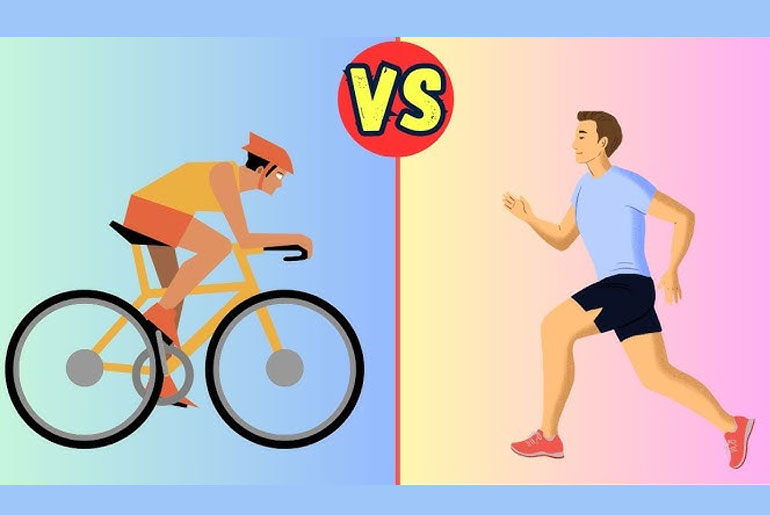Cycling and walking are both valuable forms of physical activity with distinct advantages. Walking is highly accessible, requiring minimal equipment and adaptable to various environments, making it a convenient choice for daily exercise. It is a low-impact activity suitable for individuals of all fitness levels and provides numerous health benefits. On the other hand, cycling offers a more dynamic cardiovascular workout and can be an efficient means of transportation.
While it may require a bike and specific infrastructure, cycling allows for covering greater distances and may appeal to those seeking a slightly more intense exercise experience. The choice between cycling and walking ultimately depends on individual preferences, convenience, and factors such as accessibility, time commitment, and personal fitness goals. Both activities contribute to overall well-being and can be enjoyable additions to a daily routine.
The debate between cycling and walking for weight loss has been ongoing, each offering distinct advantages and drawbacks. Let’s unveil the pros and cons of each to help you make an informed decision based on your fitness preferences and goals.
Cycling:
Pros:
- Higher Caloric Burn: Cycling tends to burn more calories than walking, especially at higher speeds or during intense cycling sessions.
- Greater Distance Coverage: Biking allows you to cover longer distances in a shorter time, making it an efficient option for those with time constraints.
- Low Impact on Joints: Cycling is a low-impact exercise, putting less stress on the joints compared to high-impact activities. This makes it suitable for individuals with joint issues.
- Variety of Intensity Levels: You can easily adjust the intensity of your cycling workout by changing gears or incorporating uphill rides, providing a versatile and scalable exercise routine.
Cons:
- Equipment Dependency: Cycling requires a bike and related gear, which can be a significant upfront investment compared to walking.
- Weather Dependency: Inclement weather conditions may limit your ability to cycle outdoors comfortably. Indoor stationary cycling is an alternative but lacks the outdoor experience.
- Skill Requirement: While basic cycling is easy to learn, more advanced techniques and road cycling may require specific skills and confidence.
Walking:
Pros:
- Accessible to All Fitness Levels: Walking is a simple and accessible exercise suitable for all fitness levels, making it an ideal starting point for beginners.
- No Equipment Needed: Minimal equipment is needed for walking, making it a cost-effective and convenient option.
- Low Injury Risk: Walking is a low-impact activity, reducing the risk of injuries compared to higher-impact exercises.
- Adaptability: You can easily incorporate walking into your daily routine, such as walking to work, taking the stairs, or walking during breaks.
Cons:
- Lower Caloric Burn: Walking generally burns fewer calories compared to cycling, which may necessitate longer durations for weight loss.
- Time-Consuming for Long Distances: Covering significant distances by walking takes more time than cycling, making it less time-efficient for those with busy schedules.
- Limited Intensity: While you can increase walking intensity with brisk walking or uphill climbs, it may not offer the same intensity options as cycling.
Conclusion:
The choice between cycling and walking for weight loss ultimately depends on individual preferences, goals, and circumstances. Cycling offers a higher caloric burn and engages multiple muscle groups but comes with equipment costs and skill requirements. On the other hand, walking is accessible, low-impact, and encourages consistency but may require more time and intensity to achieve weight loss goals.
Combining both activities or alternating between cycling and walking can provide a well-rounded approach to weight loss, capitalizing on the unique benefits of each form of exercise. Additionally, incorporating a balanced diet and other forms of physical activity can further enhance weight loss efforts, promoting overall health and well-being.
Disclaimer:
The information contained in this article is for educational and informational purposes only and is not intended as a health advice. We would ask you to consult a qualified professional or medical expert to gain additional knowledge before you choose to consume any product or perform any exercise.






